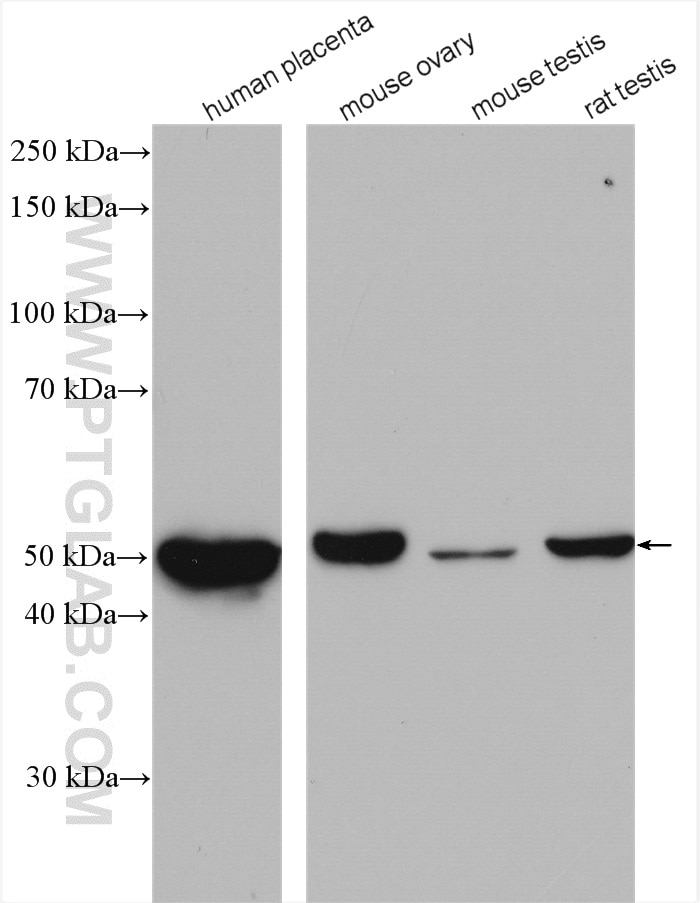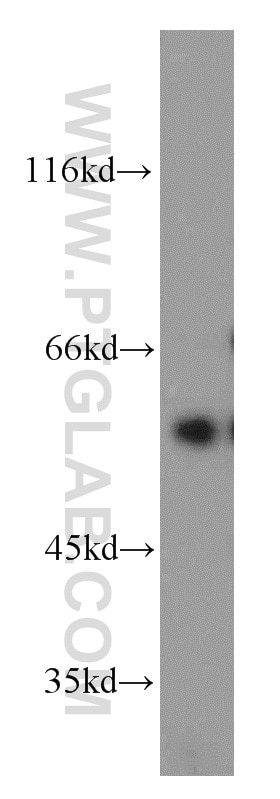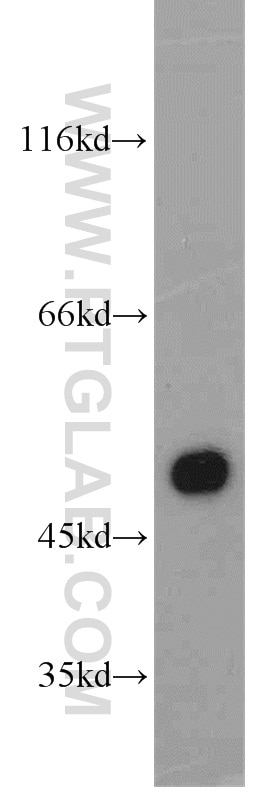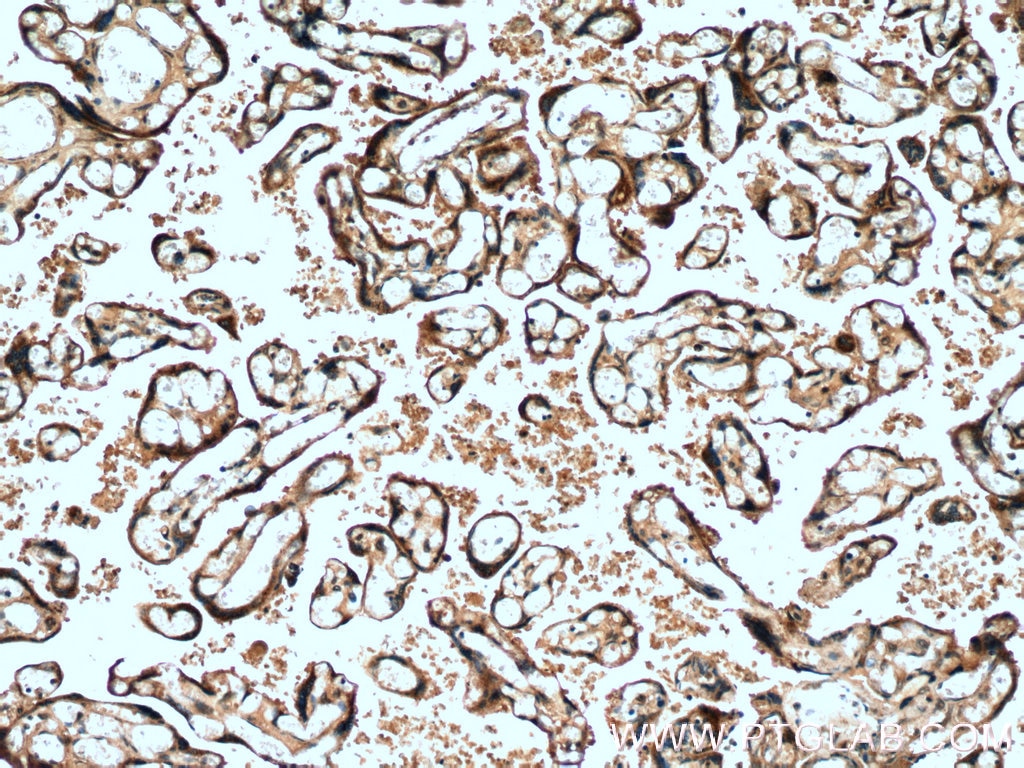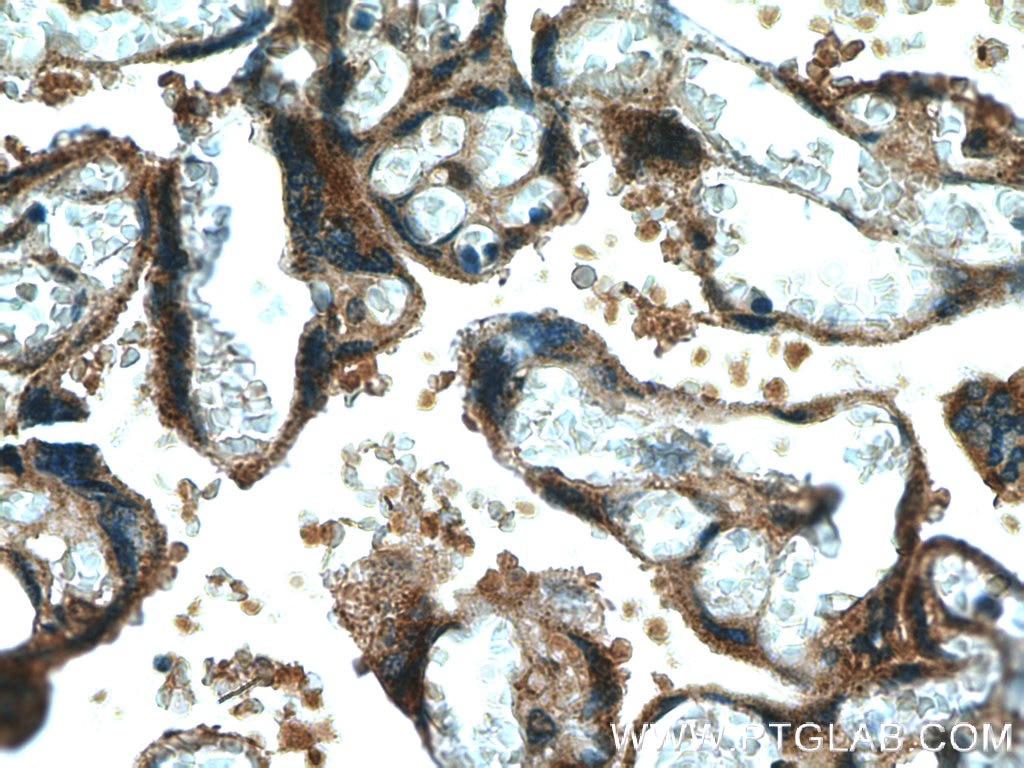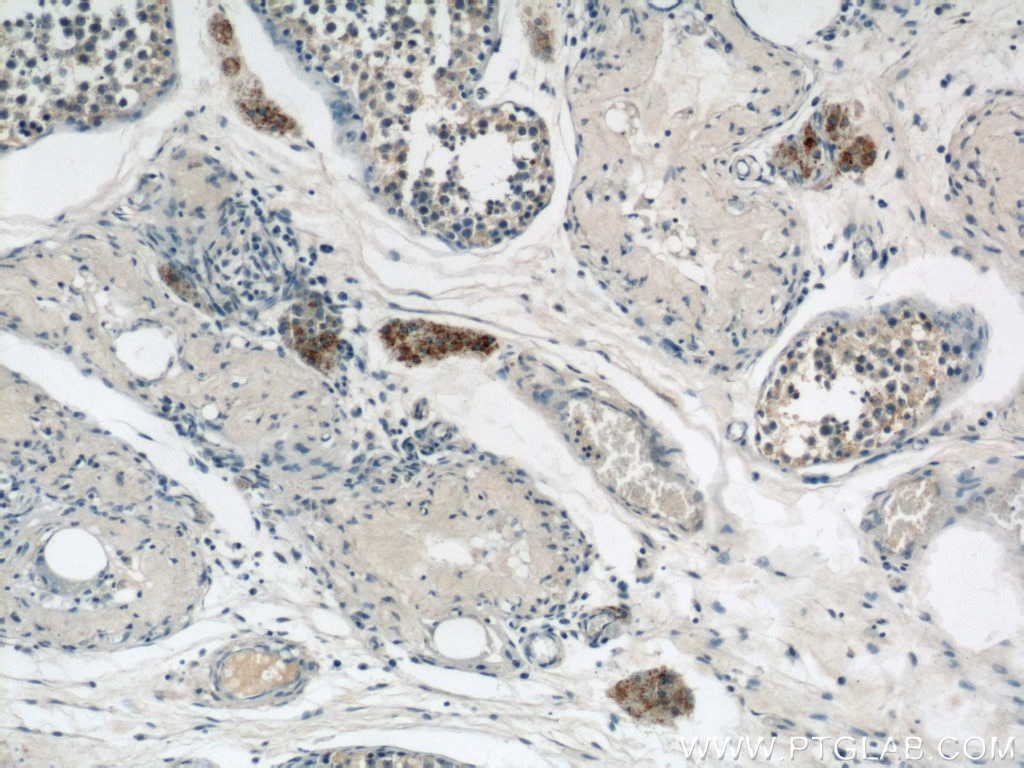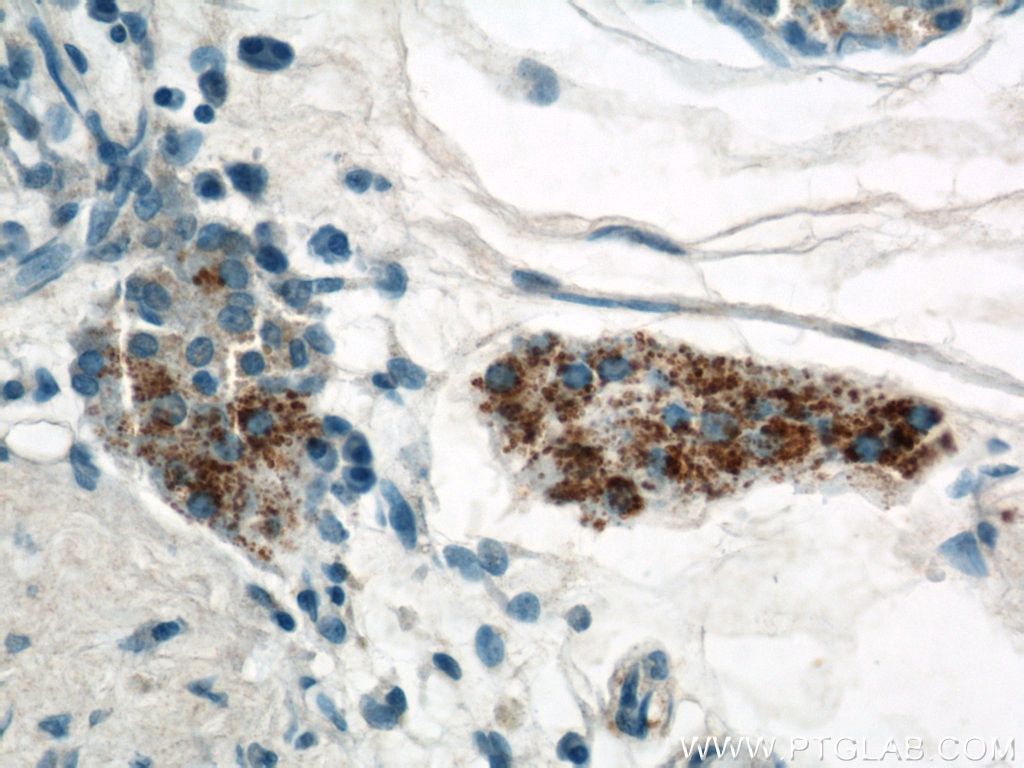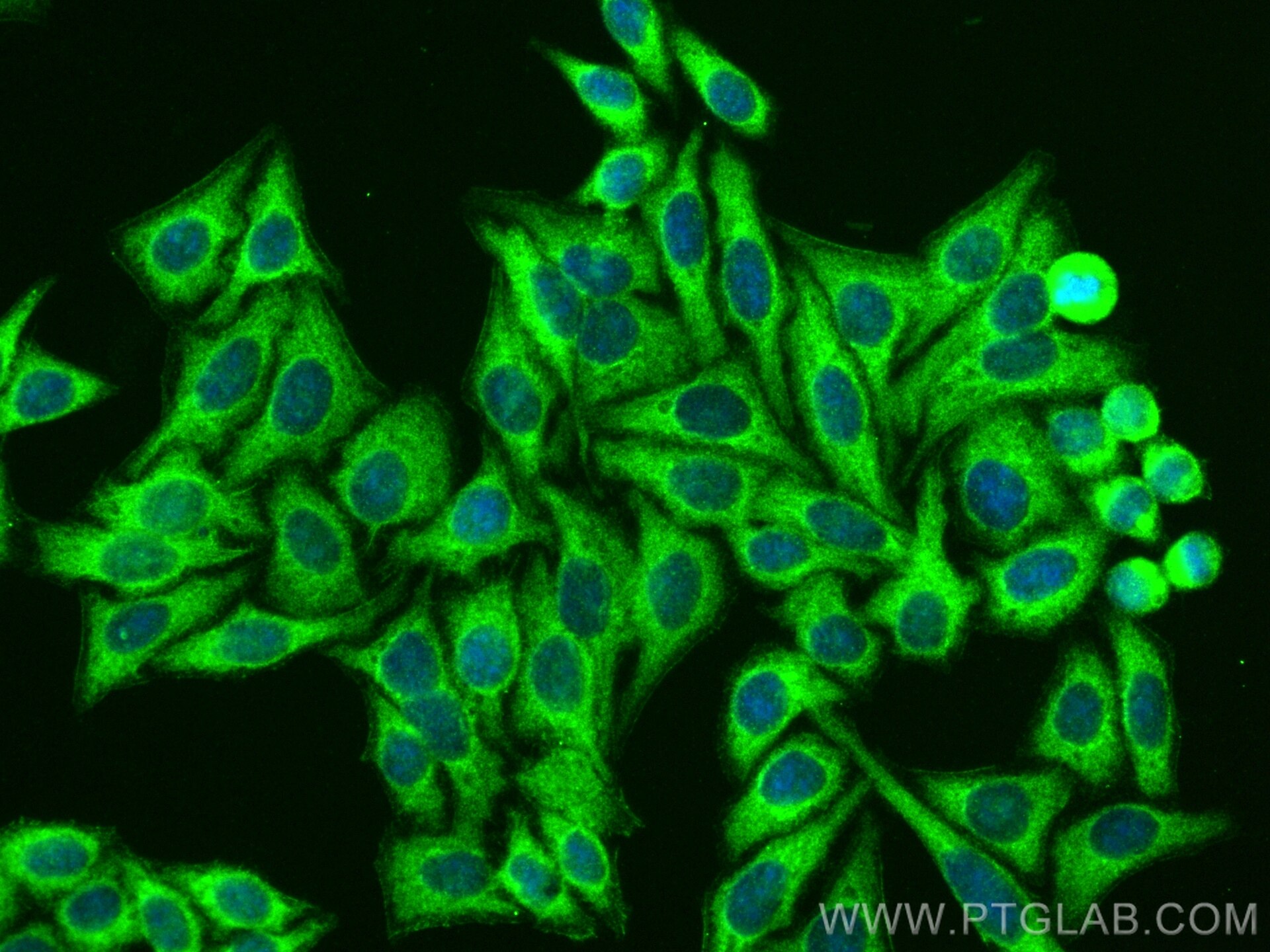Tested Applications
| Positive WB detected in | human placenta tissue, HeLa cells, mouse ovary tissue, mouse testis tissue, rat testis tissue |
| Positive IHC detected in | human placenta tissue, human testis tissue Note: suggested antigen retrieval with TE buffer pH 9.0; (*) Alternatively, antigen retrieval may be performed with citrate buffer pH 6.0 |
| Positive IF/ICC detected in | HepG2 cells |
Recommended dilution
| Application | Dilution |
|---|---|
| Western Blot (WB) | WB : 1:1000-1:4000 |
| Immunohistochemistry (IHC) | IHC : 1:100-1:400 |
| Immunofluorescence (IF)/ICC | IF/ICC : 1:50-1:500 |
| It is recommended that this reagent should be titrated in each testing system to obtain optimal results. | |
| Sample-dependent, Check data in validation data gallery. | |
Published Applications
| WB | See 55 publications below |
| IHC | See 5 publications below |
| IF | See 8 publications below |
Product Information
13363-1-AP targets CYP11A1 in WB, IHC, IF/ICC, ELISA applications and shows reactivity with human, mouse, rat samples.
| Tested Reactivity | human, mouse, rat |
| Cited Reactivity | human, mouse, rat, pig, chicken |
| Host / Isotype | Rabbit / IgG |
| Class | Polyclonal |
| Type | Antibody |
| Immunogen | CYP11A1 fusion protein Ag4182 Predict reactive species |
| Full Name | cytochrome P450, family 11, subfamily A, polypeptide 1 |
| Calculated Molecular Weight | 521 aa, 60 kDa |
| Observed Molecular Weight | 49-52 kDa |
| GenBank Accession Number | BC032329 |
| Gene Symbol | CYP11A1 |
| Gene ID (NCBI) | 1583 |
| RRID | AB_2088552 |
| Conjugate | Unconjugated |
| Form | Liquid |
| Purification Method | Antigen affinity purification |
| UNIPROT ID | P05108 |
| Storage Buffer | PBS with 0.02% sodium azide and 50% glycerol pH 7.3. |
| Storage Conditions | Store at -20°C. Stable for one year after shipment. Aliquoting is unnecessary for -20oC storage. 20ul sizes contain 0.1% BSA. |
Background Information
CYP11A1 is also known as cytochrome P450C11A1, cytochrome P450scc and cytochrome P450, subfamily XIA. It is the first enzyme of all steroidogenic pathways, its elimination results in syndromes of steroid deficiency, including electrolyte imbalance, aberrant gene regulation, and suppression of male sex organ development(PMID: 12145347). Expression of CYP11A1 has been a useful tool for monitoring the differentiation state of cells from varius endocrine tissues. Identification of CYP11A1 expression by 13363-1-AP detected a ~45kd band in human placenta, with respect to the reported band at 49-52kd by Roby, et al and Durkee, et al. The murine 32-kDa isoform of Cyp11a1 is not produced by omission of the first ATG-containing exon (as is the case for human CYP11A1) but perhaps by alternative translational initiation(PMID:19342447).
Protocols
| Product Specific Protocols | |
|---|---|
| WB protocol for CYP11A1 antibody 13363-1-AP | Download protocol |
| IHC protocol for CYP11A1 antibody 13363-1-AP | Download protocol |
| IF protocol for CYP11A1 antibody 13363-1-AP | Download protocol |
| Standard Protocols | |
|---|---|
| Click here to view our Standard Protocols |
Publications
| Species | Application | Title |
|---|---|---|
Brain Behav Immun Placenta-specific CYP11A1 overexpression lead to autism-like symptom in offspring with altered steroid hormone biosynthesis in the placenta-brain axis and rescued by vitamin D intervention | ||
Nat Commun 1,25D3 prevents CD8(+)Tc2 skewing and asthma development through VDR binding changes to the Cyp11a1 promoter. | ||
Autophagy Epg5 deficiency leads to primary ovarian insufficiency due to WT1 accumulation in mouse granulosa cells. | ||
Environ Pollut Integrated RNA sequencing and biochemical studies reveal endoplasmic reticulum stress and autophagy dysregulation contribute to Tri (2-Ethylhexyl) phosphate (TEHP)-induced cell injury in Sertoli cells | ||
Clin Transl Med Melatonin inhibits lipid accumulation to repress prostate cancer progression by mediating the epigenetic modification of CES1. |
